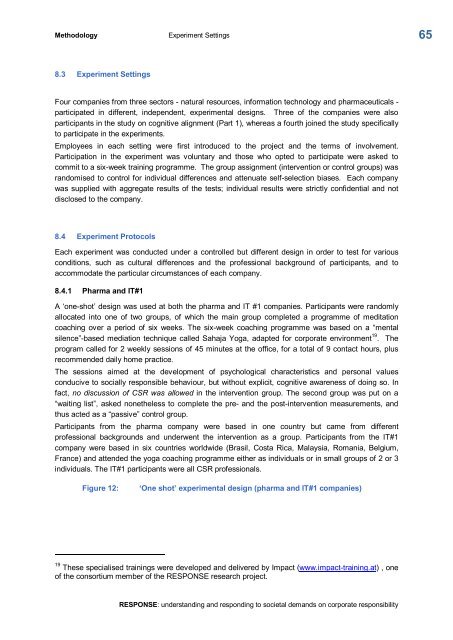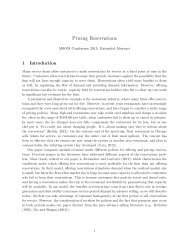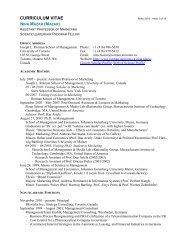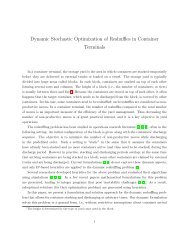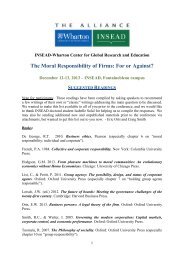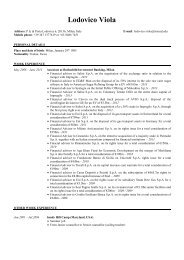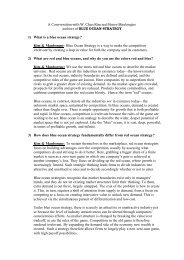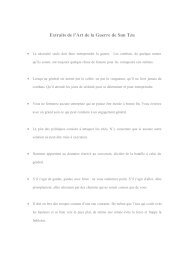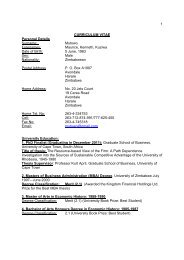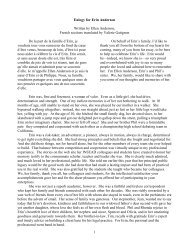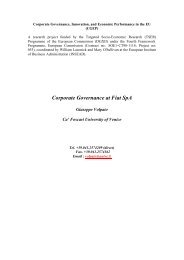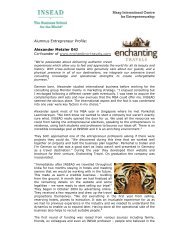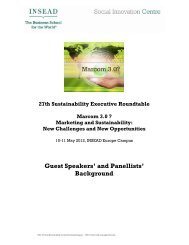RESPONSE - Insead
RESPONSE - Insead
RESPONSE - Insead
You also want an ePaper? Increase the reach of your titles
YUMPU automatically turns print PDFs into web optimized ePapers that Google loves.
Methodology Experiment Settings<br />
8.3 Experiment Settings<br />
Four companies from three sectors natural resources, information technology and pharmaceuticals <br />
participated in different, independent, experimental designs. Three of the companies were also<br />
participants in the study on cognitive alignment (Part 1), whereas a fourth joined the study specifically<br />
to participate in the experiments.<br />
Employees in each setting were first introduced to the project and the terms of involvement.<br />
Participation in the experiment was voluntary and those who opted to participate were asked to<br />
commit to a sixweek training programme. The group assignment (intervention or control groups) was<br />
randomised to control for individual differences and attenuate selfselection biases. Each company<br />
was supplied with aggregate results of the tests; individual results were strictly confidential and not<br />
disclosed to the company.<br />
8.4 Experiment Protocols<br />
Each experiment was conducted under a controlled but different design in order to test for various<br />
conditions, such as cultural differences and the professional background of participants, and to<br />
accommodate the particular circumstances of each company.<br />
8.4.1 Pharma and IT#1<br />
A ‘oneshot’ design was used at both the pharma and IT #1 companies. Participants were randomly<br />
allocated into one of two groups, of which the main group completed a programme of meditation<br />
coaching over a period of six weeks. The sixweek coaching programme was based on a “mental<br />
silence”based mediation technique called Sahaja Yoga, adapted for corporate environment 19 . The<br />
program called for 2 weekly sessions of 45 minutes at the office, for a total of 9 contact hours, plus<br />
recommended daily home practice.<br />
The sessions aimed at the development of psychological characteristics and personal values<br />
conducive to socially responsible behaviour, but without explicit, cognitive awareness of doing so. In<br />
fact, no discussion of CSR was allowed in the intervention group. The second group was put on a<br />
“waiting list”, asked nonetheless to complete the pre and the postintervention measurements, and<br />
thus acted as a “passive” control group.<br />
Participants from the pharma company were based in one country but came from different<br />
professional backgrounds and underwent the intervention as a group. Participants from the IT#1<br />
company were based in six countries worldwide (Brasil, Costa Rica, Malaysia, Romania, Belgium,<br />
France) and attended the yoga coaching programme either as individuals or in small groups of 2 or 3<br />
individuals. The IT#1 participants were all CSR professionals.<br />
Figure 12: ‘One shot’ experimental design (pharma and IT#1 companies)<br />
19 These specialised trainings were developed and delivered by Impact (www.impacttraining.at) , one<br />
of the consortium member of the <strong>RESPONSE</strong> research project.<br />
<strong>RESPONSE</strong>: understanding and responding to societal demands on corporate responsibility<br />
65


